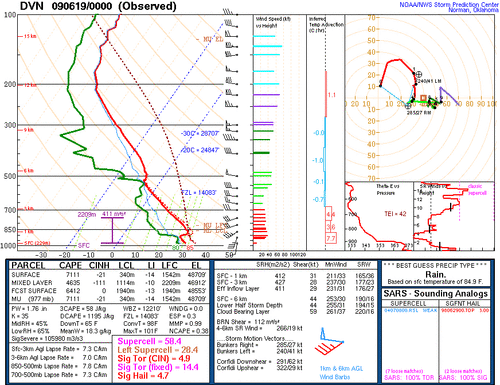Simon Brewer
EF3
"The instability isnt strong enough to overcome the upper level winds and keep the updraft upright." -Jay McCoy
The statement above is false. I tried to make it very simple: shear did not "kill the updraft", the lack of instability or an inversion "killed" the updrafts you've seen "hundreds of times" in high shear environments; in which case I would call those environments with High Shear and No instability instead of High shear and weak instability. And then after the updraft is no longer surface-based the remnant cloud debris of the updraft might appear to be "knocked over" or "ripped apart". I don't really care if you've seen it "hundreds of times" you don't understand the processes responsible for the demise of a storm in a low CAPE environment. Don't blame the shear, blame the lack or non-existance of instability.
It's a person's own preference whether to like high CAPE/low shear environments over low CAPE/high shear environments, but 'make believe' science like 'shear knocking over' or 'ripping apart' updrafts when instability is present is incorrect rhetoric.
"If your saying an updraft wont be leaned over and ripped apart by strong shear vs weak instability then your nuts." - Jay McCoy
And before you call me 'nuts' try taking a few thermodynamic and fluid dynamic courses....
The statement above is false. I tried to make it very simple: shear did not "kill the updraft", the lack of instability or an inversion "killed" the updrafts you've seen "hundreds of times" in high shear environments; in which case I would call those environments with High Shear and No instability instead of High shear and weak instability. And then after the updraft is no longer surface-based the remnant cloud debris of the updraft might appear to be "knocked over" or "ripped apart". I don't really care if you've seen it "hundreds of times" you don't understand the processes responsible for the demise of a storm in a low CAPE environment. Don't blame the shear, blame the lack or non-existance of instability.
It's a person's own preference whether to like high CAPE/low shear environments over low CAPE/high shear environments, but 'make believe' science like 'shear knocking over' or 'ripping apart' updrafts when instability is present is incorrect rhetoric.
"If your saying an updraft wont be leaned over and ripped apart by strong shear vs weak instability then your nuts." - Jay McCoy
And before you call me 'nuts' try taking a few thermodynamic and fluid dynamic courses....
Last edited by a moderator:


